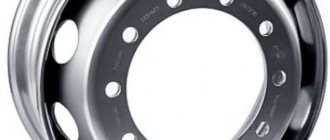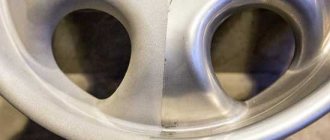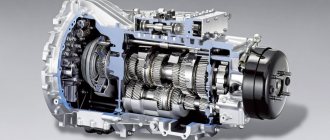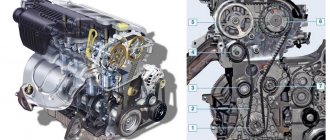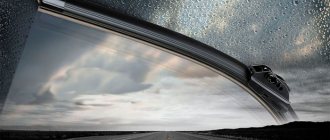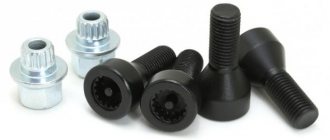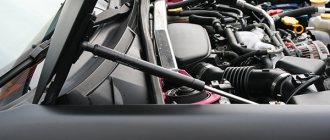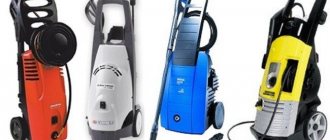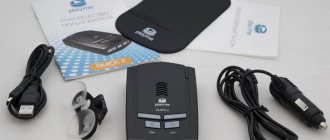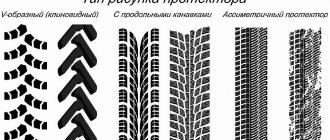Do you want to “dress” your car with premium wheels with a successful design? You have several options. However, if you want modern technology, you can purchase forged wheels. They are not only beautiful, but also have significant advantages over alloy wheels.
Forging is a manufacturing process that involves shaping a metal or alloy using local compressive forces. Forged ones, however, still don't have a monopoly; alloy wheels are often seen on the road as well. What is the difference between forged and cast wheels, and which one is better?
Material
These two types of discs are made of the same metal. Therefore, based on this point, it will not be possible to unequivocally answer the question of whether a forged disk or a cast one is better. Alloys are possible from aluminum, but can sometimes be "diluted" by adding magnesium. The primary material for forged wheels is 6061 aluminum alloy, which is used primarily in lightweight aerospace applications. Because the base material contains less than 1% silicon, the discs are shinier than cast ones. An even higher gloss is achieved with ceramic polishing.
The difference between forged and cast wheels is more noticeable at the manufacturing stage. According to their production, these two types of discs are produced in two different ways. The bulk of the production of forged wheels is done in the same traditional way as its cast counterpart. This approach to organizing production, of course, reduces the cost for the consumer, but affects quality. Experts have proven that even the unmatched strength of just one rim cannot guarantee sufficient rigidity for the entire rim. If the load on the forged disc does not exceed the strength limit of the rolled part of the rim, the disc operates normally. Once the tensile strength is exceeded, cracks appear, a problem so familiar to owners of alloy wheels.
In addition, areas of increased internal stress are formed in areas where the rolled part of the disk is connected to the unprotected metal. At the very least, it does not add any strength to the final product and does not affect the overall weight of the disc. It should be remembered that high-quality forged wheels are much lighter and much stronger than cast wheels. Most domestic manufacturers produce car wheels in full compliance with all phases of technology. This responsible approach allows you to achieve perfect results and obtain high quality products with attractive performance. Light weight wheels, improved vehicle dynamics, increased durability and unrivaled safety are just some of the benefits of forged wheels. To fully understand how forged wheels are made in our country, it is necessary to carefully study the main technological stages.
Pros and cons of forged wheels
Forged wheels have their origins in racing and motorsports. The reasons are high stability, very low weight and, as a result, ideal suitability for the sports rider. This gives the forged wheel an advantage over alloy wheels, and despite the higher cost, many car owners will be happy with the purchase as the forged wheel offers a significant improvement in driving performance.
Why are forged wheels better than cast wheels?
The advantages of forged wheels include their light weight, but they are more reliable and durable than other types. You can't just break a forged wheel with anything! Like all aluminum wheels, they're nice to look at, but all these benefits come at a price that costs a little more. The higher price is due to the complex manufacturing process, the materials used are not much different from its aluminum siblings.
Pros:
- Premium design wheels;
- Extremely complex production process;
- The first forged wheels for TESLA vehicles with ECE approval;
- The main material is the highest quality 6061 T6 aluminum (used in the aerospace industry);
- Weight reduction by approximately 30% due to higher material density;
- Thinner “spokes”;
- Higher gloss thanks to silicone content of only 0.8%;
- Highest quality ceramic polishing and double clear coating.
Minuses:
- High price.
Light alloy wheels
The name “light alloy” is given to these products due to the properties of the materials from which they are made. This is an alloy of light metals - aluminum and magnesium; titanium and copper are added to it in small quantities for strength and ductility. Hence the second name for such discs - titanium. There are 2 types of alloy rims:
- cast;
- forged (pressed).
These 2 groups of products differ from each other in manufacturing technology, performance properties and cost. To understand which ones are better, you need to look at disk production in more detail.
Sales representatives often impose on motorists the opinion that, unlike cast products, forged rims are made from incredibly durable and expensive metals, almost platinum. In fact, this is a myth; the composition of the alloy for the manufacture of both groups of products is absolutely the same. Manufacturers can slightly change the ratio of base and additional metals in the melt at their discretion.
About production technology
As the name suggests, cast products are made by pouring molten metal into special molds (casting method). The sequence of technological operations looks like this:
- Metals - ingredients are placed in an oven, melted and mixed.
- The alloy is fed to the mold and poured into it with a special ladle.
- After hardening, the workpiece is removed from the mold and moved for machining. In this case, the structure of the rim and spokes has already been formed, all that remains is to remove excess material around the edges and refine the holes for the bolts, as well as balance the disc.
- The last stage is testing under certain speed and shock loads.
At factories of famous brands, the process is fully automatic using CNC machines, even casting is performed by a robot. Manual labor is practically eliminated.
The name “forged” does not accurately reflect the production method of these discs, since they are not forged, but extruded from a heated alloy using high-power hydraulic presses. The manufacturing algorithm is as follows:
- As in the previous case, an alloy is prepared in the furnace, from which cylindrical blanks are cast.
- Each blank undergoes several pressing operations, where it is formed into a solid wheel rim without spokes or holes.
- Products undergo 2 heat treatment operations - hardening (strengthens the alloy) and tempering to relieve internal stresses in the metal.
- Using mechanical processing on a variety of machines, holes are made in the disks, the pattern of the spokes is cut out, excess material is removed from the edges and balancing is carried out.
- Testing at critical loads is performed on special equipment.
So the second myth is dispelled - that due to the manufacturing technology, forged wheels cannot boast of a varied design. On CNC milling machines, you can cut any, even the most complex, pattern into the body of the workpiece.
Pros and cons of cast products
The main advantage of wheels made from light alloy casting is their attractive appearance, which makes a car of any age and make look much prettier. And the choice of products in terms of configuration and number of knitting needles is incredibly wide. This is the main reason prompting car enthusiasts to replace steel wheel rims with light alloy ones.
Other advantages are also important, but they are of a technical nature:
- the reduced weight of the products results in lower fuel consumption and improves vehicle handling;
- for the same reason, the acceleration dynamics of the car improves, and the braking distance is reduced;
- products are initially balanced due to production technology;
- long service life.
Of the listed positive aspects, only the durability and balance of alloy wheels is really noticeable when the car owner changes tires in a tire shop. The improvement in handling and acceleration dynamics can only be felt by an experienced driver, and the change in fuel consumption is so insignificant that it is completely unnoticeable (0.1-0.2 liters per 100 km). Therefore, the beauty of alloy wheels remains a priority, and only then their technical parameters are valued.
Now about the disadvantages:
- The products are resistant to strong and sharp impacts. A crack appears in the thinnest place or where an air pocket has formed inside the metal. Manufacturers claim that casting cannot be repaired.
- The price of the product is higher than that of stamped steel wheels. Due to price variations, the difference can range from 50 to 200%.
- Cast rims cannot be used on minibuses and small trucks as they are not designed to withstand such loads.
- Maintenance operations for such products at a tire shop (changing tires, balancing) are more expensive.
In the post-Soviet countries there are many workshops where specialists have become accustomed to soldering cracks in aluminum castings. But such a repair cannot be called complete, and restored discs cannot be installed on the front axle of the car.
Advantages and disadvantages of forged wheels
The significant and only drawback of forged rims is their high cost, which is 2-5 times higher than casting, depending on the manufacturer. But for this money you will get the following advantages:
- reliability and strength;
- durability, the pressed rim will last as long as the car itself;
- light weight of the product (even compared to casting), which improves the car’s behavior on the road and reduces fuel consumption.
Thanks to pressing and hardening in the manufacture of such rims, the metal does not have hidden holes and acquires increased strength, so cracks from impacts are an extremely rare occurrence. In addition, the spokes of the product can be made thinner and more openwork, giving the wheel design additional lightness and beauty. This is what you pay money for when you buy a forged wheel.
How to make cast alloy wheels - video
Pros and cons of alloy wheels
High-quality aluminum wheels have ideal weight distribution and lower material weight with high strength. Therefore, you don't have to worry so much that you will immediately deform your wheels when you hit a pothole or hole in the road. Of course, on low profile tires you would prefer to avoid road imperfections, but in general alloy wheels will last a long time. Aluminum wheels are generally stronger and more resistant to mechanical damage, bending and rust, although galvanic corrosion can occur if they are not properly cared for.
Good weight and mass distribution will improve acceleration dynamics and improve braking performance. In motorsports, magnesium or carbon wheels are used, where the weight difference is even more noticeable.
Due to the stronger design of alloy wheels compared to sheet metal rims, rims can be manufactured with larger apertures between the individual spokes, which are aerodynamically shaped, allowing for easier air flow to and from the brakes. This way, the brakes are cooled better while driving, heat is dissipated more efficiently, braking performance is improved, and there is no risk of overheating during more demanding braking or brake failure due to excessive heat.
Stamped discs
Such discs are the simplest and cheapest option, which is usually installed by automakers on budget cars in order to reduce the final cost.
Manufacturing
Stamped wheels are made from steel ; the stamping method is used for manufacturing.
pros
Among the main advantages of steel wheels are low cost, sufficient strength, and high maintainability (which is quite important when the vehicle is actively used on roads with poor surfaces).
Minuses
- Heavy weight compared to analogues, almost complete lack of choice in terms of design, as well as low anti-corrosion resistance.
- The increased mass of stamped disks causes increased fuel consumption, decreased dynamics, deterioration of controllability, as well as premature failure of individual chassis elements. Also, in some cases, the comfort of the driver and passengers suffers.
- In practice, owners have to regularly paint stamped wheels, as well as use plastic hubcaps to improve the appearance of the wheels and the car as a whole.
Of course, there are exceptions (for example, branded 5-spoke “stamps” on Opel models or expensive original hubcaps that very successfully imitate alloy wheels), but in most cases the stamped wheel looks standard.
Disadvantages of alloy wheels
Large holes keep the brakes cool in the summer, but in the winter you'll have trouble keeping dirt like salt, etc. off the wheels.
The material itself and the production of aluminum wheels are more expensive than steel wheels, so their price is slightly higher compared to “tin” ones. If you drive aluminum rims in winter, there is a risk that the salt, combined with frozen water and gravel, will scratch, etch and damage them.
We also shouldn't forget the fact that high quality and designer aluminum wheels attract thieves (however, this point also applies to forged wheels). Here, however, the solution is quite simple in the form of security screws (with a special, original form of fastening), where one screw per wheel is enough to protect against theft. You can secure all the wheels with a set of 4 security screws.
Stamped steel rims - the secret of popularity
More than 60% of all cars in the post-Soviet countries are equipped with disks made of sheet carbon steel. The vast majority of these cars are equipped with these wheels from the factory, since they are cheaper than others. Exceptions are cars in luxury configurations or luxury brands, for which the “stamping” frankly does not suit the appearance.
Despite their cheapness, iron wheels have many advantages:
- Compared to aluminum alloy, steel has ductility and elasticity, so the rim partially absorbs impacts when driving over large uneven surfaces;
- for the same reason, steel products are easy to repair - deformed areas can be straightened, and cracks can be welded;
- scope of application - transport of any purpose and carrying capacity;
- low prices for wheel maintenance;
- There are no problems with fastening the wheels, for which factory (standard) bolts are used.
- The most valuable advantage when driving on our roads is the high maintainability of stamped wheels and the ability to absorb shocks. Combined with low cost, these features make traditional iron rims the most attractive in the eyes of ordinary users. To understand how their cost is formed, it would not hurt to familiarize yourself with the manufacturing technology of such products.
Production by stamping
Thick sheet steel is used to make iron rims. Two types of workpieces are cut from it - a circle and a strip, sent for further processing. The process looks like this:
- On a hydraulic press, the core of the future disk with holes for bolts and technological openings is stamped from a steel circle.
- The strip is sent to rollers, where it is bent into a cylinder shape. The ends of the sheet are welded together, after which the seam is cleaned.
- A hydraulic press squeezes the finished rim out of the cylinder, then a hole for the valve is drilled in it.
- Both elements are connected by welding, then covered with primer and painted.
In the manufacture of stamped products, expensive CNC machines and furnaces are not used, which is why energy costs are significantly lower. Hence the low price of the final product.
Video of the assembly process of stamped products
How to determine whether a wheel is forged or cast
After reading the article, you probably have a question: how to distinguish a cast wheel from a forged one? To distinguish them, pay attention to:
- Weight.
- As a rule, forged wheels weigh less than cast wheels.
- Inscriptions on the disk.
- There are special markings on forged wheels; usually the inscriptions on forged wheels are depressed, while on cast wheels they are convex.
Many car owners would add price to this list, however, it is not always a differentiating factor. This is due to the fact that some companies sell their products at inflated prices.
Maximum strength
However, alloy wheels also come in different types - if you buy them in a large store, then after determining the required size you will be asked whether you need forged wheels or cast ones? It’s worth saying right away that mechanical forging has nothing in common with manual forging, which can be seen in small enterprises working with metal. In fact, forged wheels are made by stamping a light alloy billet - the difference from the production of steel wheels is the use of different shapes and the use of very high temperatures at which the metal is in a semi-liquid state. Forged wheels are also made from non-ferrous metals, but the proportion of high-strength components such as magnesium or titanium is much higher.
If casting involves complete melting of the metal, accompanied by a violation of its molecular structure, then this does not happen during forging. As a result, the wheels gain even greater strength, which ensures their reliability and durability. Experts say that if you hit a large obstacle, you are more likely to damage the suspension components than the forged wheel. The difference lies in the weight, which is 5–25% less for products obtained by forging. Thanks to this, fuel consumption is reduced, the wear rate of the chassis is reduced, and the comfort of the vehicle is improved.
The only serious drawback of forged wheels is the high cost due to the peculiarities of the production process. It is also worth mentioning that they cannot have a complex design, since the stamping mold imposes its own restrictions on the curvature of the surfaces. This is the answer to the question of how to distinguish forged wheels from cast ones - they have a chopped rough shape. Despite some design limitations, forged wheels are a favorite among street racers and tuning enthusiasts. They can improve the dynamic parameters of the car, as well as give it an unusual appearance.
Bottom line
Aluminum wheels were originally designed for racing. They offer many advantages, for example each part of the rim can be optimally matched to the loads. This means the entire rim doesn't have to be thick and you'll save a lot of weight. Tuning enthusiasts are also enthusiastic about the possibility of combining different materials. Another advantage of alloy wheels is their variability. The width and offset can be changed using different rim flanges. The multi-piece design is also an advantage if alloy wheels are damaged. In this case, it is enough to replace only the damaged part, rather than buying a completely new rim.
As already mentioned, forged wheels have a number of advantages over cast ones. On the one hand, they are more stable. This is due to the use of particularly high quality materials and the high compression ratio during the forging process, their surface quality is much higher than that of a cast rim. Besides stability, the most decisive advantage of forged wheels is their low weight. High compression makes a forged wheel 40% lighter than a cast wheel. Forged wheels are the ideal companion for sporty drivers. In addition, they impress with their low weight and superior braking properties.
The polished surface of the forged rim is especially bright and shiny. This gloss lasts particularly long when painted with an acrylic lacquer seal, so there is no need for time-consuming polishing. The seal also protects against scratches and environmental influences. If you know all these advantages of forged wheels, then it is also clear why they have a higher price than cast ones. With high strength and resulting low weight, these alloy wheels are by far the best.
Which wheel is better, cast or forged? Every car owner must answer this question himself, since both wheel options are good, however, we would recommend purchasing forged wheels. We consider them to be the best due to their low weight and durability.
What is the difference between forged car wheels and cast ones?
Both technologies use aluminum, magnesium and their alloys. Products in subcategories are distinguished by the following performance qualities:
- cast from magnesium - lightness, but not the highest strength (afraid of shocks);
- cast aluminum - optimal set of properties;
- forged from aluminum - lightness and strength;
- forged from magnesium - maximum strength and lightness.
To compare the parameters, you can take a suitable example - KHANN forged wheels. Compared to cast and stamped analogues, they are almost twice as strong, 20%-60% lighter, have less inertia (the car becomes more controllable) and better acceleration/braking characteristics.
